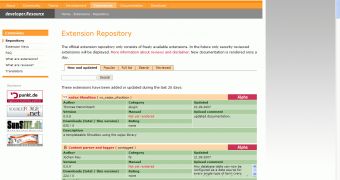The most common question that comes in your mind when you need to deploy a web site with a content management system (CMS) is "What is the best content manager that I should choose?". The answer is difficult to find, because you will have to choose from hundreds of content managers available on the Internet.
Assuming that you know the preliminary structure and destination of your web site, there are a few guidelines that could help you find the appropriate CMS. In the first place, you should decide if you need a free or a commercial CMS software. In case of a commercial one you should analyse the ratio between features and price, by comparing it with other open source or free products, that could offer you even more for free.
Then, if you do not find a free content manager, knowing the basic expected features in a CMS you should compare various commercial products in order to select the desired CMS. Content management systems made in PHP with MySQL as database backend are mostly used and developed. As a general rule, when you choose a CMS, then you must see the technical requirements needed for your web hosting account, such as the version of PHP and MySQL, other libraries needed, Apache server configuration and more. The server requirements should be minimal. A good CMS will have a web installer, which guides every user in the CMS installation process.
The database administration panel must be user friendly and it has to provide an easy access for the configuration of all the features of your web site, for example it must have a file manager, a SEO link optimizer, user management, mailing list and more depending on the CMS nature. Content management systems can be of many types: blog, wiki, news publishing application, web portals, ecommerce websites and more. If you established your site goals, then you should choose the type of CMS.
It is important for a PHP/MySQL CMS to have search engine friendly URLs, many helpful materials (tutorials, on line help, integrated help), many modules to choose from (image gallery, forum, blog, polls) if you want to extend its architecture, free templates for the front end and backend available, simple navigation system and more.
A CMS should also be lightweight and to provide a simple to use HTML editor that has also the option to edit and import images. The structure of MySQL tables should be optimized in order to minimize the number of database queries. Not at last, the HTML code dynamically generated by the PHP server side scripts must be XHTML and CSS compliant. The ideal CMS will also offer you caching mechanisms that speed up the web pages loading. In essence, the CMS must be easy to use on all levels and to provide the features needed by the users in order to assure the best workflow from the point of view of the content management and site design separation.

 14 DAY TRIAL //
14 DAY TRIAL //